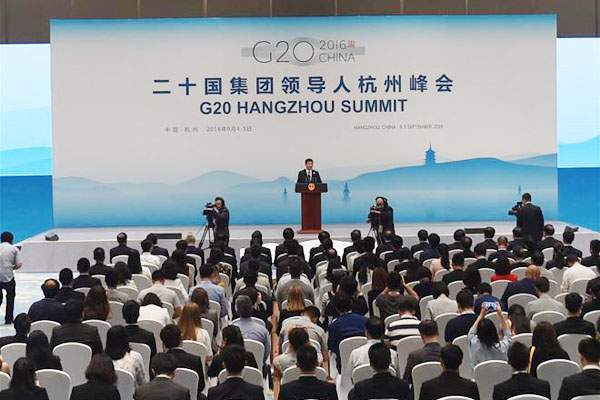Toward an innovation-led economy by 2020
Updated: 2016-09-09 07:47
By Margit Molnar(China Daily)
|
|||||||||
 |
|
Chinese President Xi Jinping attends a press conference after the 11th summit of the Group of 20 (G20) major economies in Hangzhou, capital of east China's Zhejiang Province, Sept. 5, 2016. [Photo/Xinhua] |
China, as chair of G20, made innovation a key theme for the G20 Summit, providing a new impetus to policy actions around the world to revive the global economy and achieve strong, sustainable and balanced growth. Innovation can be a powerful driver of productivity growth, the only way sustainable long-term growth can be guaranteed. And at the Hangzhou Summit, the G20 economies vowed to implement a series of ambitious structural reforms and actions to facilitate innovation, and invest in the science and technology industry, which in itself can help revive growth in many parts of the world, especially some G20 economies.
Ambitions however go much further. To foster exchange of knowledge and experience on innovation-driven growth, the G20 economies endorsed the creation of the G20 Community of Practice within the Organization for Economic Cooperation and Development-World Bank Innovation Policy Platform. They also adopted the G20 2016 Innovation Action Plan that outlines guiding principles and actions, such as adoption of pro-innovation policies and measures.
A series of action plans was adopted in related areas, too, such as the digital economy and the New Industrial Revolution.
Innovation also features in the structural reform agenda to achieve strong, sustainable and balanced growth. The G20 economies have adopted the Hangzhou G20 Guiding Principles for Structural Reform that sets the priority areas for such reform.
The importance of innovation for China and other G20 economies can be best captured by the fact that China has chosen innovative development as one of the five key principles for the 13th Five-Year Plan (2016-20), which sets the target of becoming an innovative economy by 2020. Such a transformation presupposes the accumulation of sizeable stocks of various types of capital: physical, human, institutional and social.
Related Stories
G20: Toward an innovation-based economy 2020 2016-09-06 14:46
District puts innovation at heart of growth drive 2016-09-06 08:05
Tech tycoons support Xi's innovation vision 2016-09-06 08:29
Beijing to build national sci-tech innovation center 2016-09-05 13:52
Life support zone for innovation 2016-09-05 08:43
Innovation key to success 2016-09-04 08:14
Today's Top News
No 'running commentary' on Brexit negotiations: PM
Girl earns $64,100 helping Chinese name their babies
Apple unveils iPhone 7, Pokemon Go coming to watch
Next step:Global action on growth
Greenland starts on UK's tallest residential building
Chinese women find their way through glass ceiling
China, UK vow to push 'golden-era' ties forward
MPs to debate second Brexit referendum petition
Hot Topics
Lunar probe , China growth forecasts, Emission rules get tougher, China seen through 'colored lens', International board,
Editor's Picks

|

|

|

|

|

|







